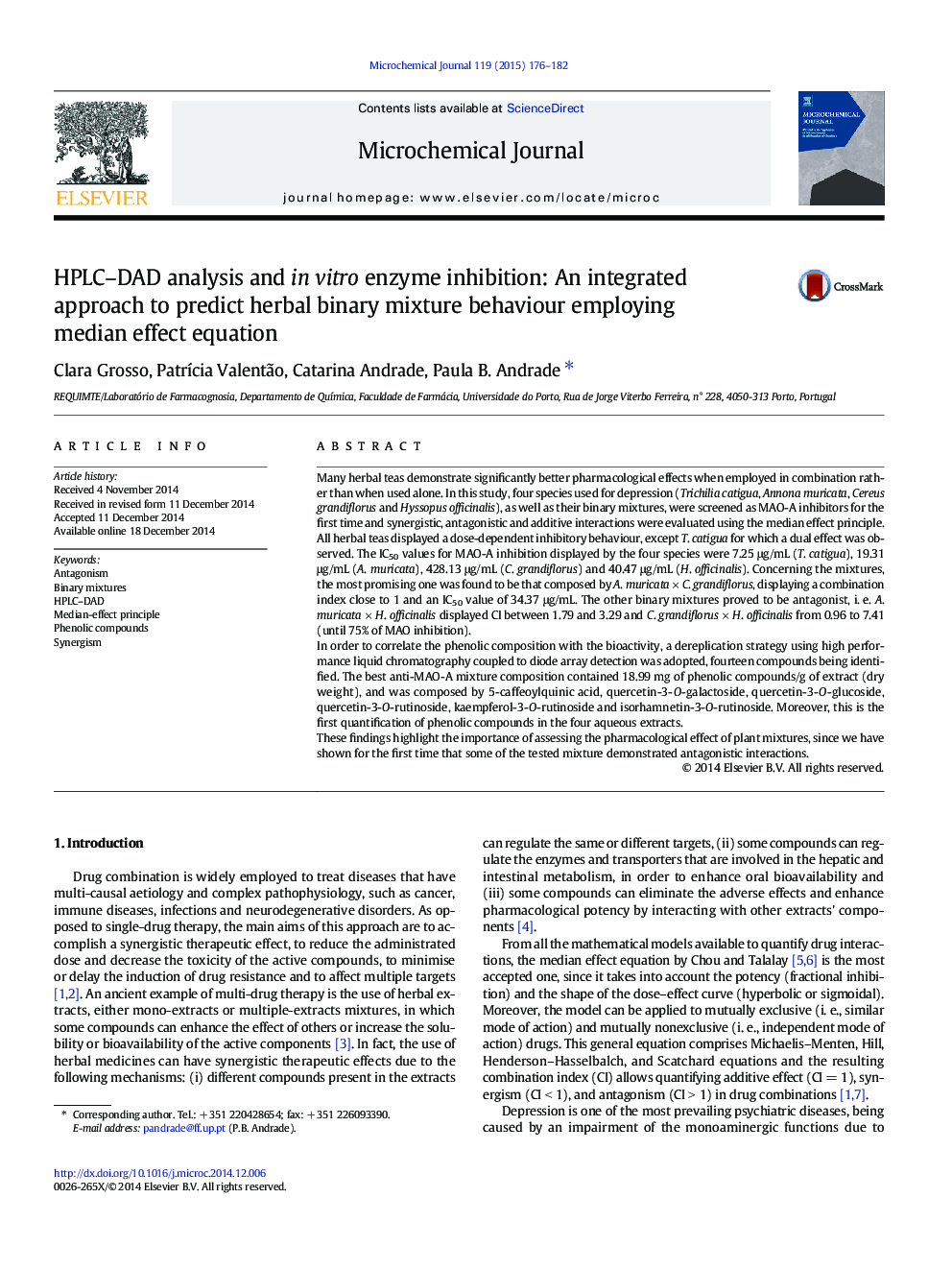| کد مقاله | کد نشریه | سال انتشار | مقاله انگلیسی | نسخه تمام متن |
|---|---|---|---|---|
| 1227746 | 1494875 | 2015 | 7 صفحه PDF | دانلود رایگان |

• First HPLC–DAD characterisation of four antidepressant herbal teas
• Combined chemistry to evaluate interactions between herbal teas
• First assessment of the antagonistic effect of antidepressant herbal tea mixtures
• Promising additive effect between Annona muricata and Cereus grandiflorus
• Flavonoids as MAO-A inhibitors
Many herbal teas demonstrate significantly better pharmacological effects when employed in combination rather than when used alone. In this study, four species used for depression (Trichilia catigua, Annona muricata, Cereus grandiflorus and Hyssopus officinalis), as well as their binary mixtures, were screened as MAO-A inhibitors for the first time and synergistic, antagonistic and additive interactions were evaluated using the median effect principle. All herbal teas displayed a dose-dependent inhibitory behaviour, except T. catigua for which a dual effect was observed. The IC50 values for MAO-A inhibition displayed by the four species were 7.25 μg/mL (T. catigua), 19.31 μg/mL (A. muricata), 428.13 μg/mL (C. grandiflorus) and 40.47 μg/mL (H. officinalis). Concerning the mixtures, the most promising one was found to be that composed by A. muricata × C. grandiflorus, displaying a combination index close to 1 and an IC50 value of 34.37 μg/mL. The other binary mixtures proved to be antagonist, i. e. A. muricata × H. officinalis displayed CI between 1.79 and 3.29 and C. grandiflorus × H. officinalis from 0.96 to 7.41 (until 75% of MAO inhibition).In order to correlate the phenolic composition with the bioactivity, a dereplication strategy using high performance liquid chromatography coupled to diode array detection was adopted, fourteen compounds being identified. The best anti-MAO-A mixture composition contained 18.99 mg of phenolic compounds/g of extract (dry weight), and was composed by 5-caffeoylquinic acid, quercetin-3-O-galactoside, quercetin-3-O-glucoside, quercetin-3-O-rutinoside, kaempferol-3-O-rutinoside and isorhamnetin-3-O-rutinoside. Moreover, this is the first quantification of phenolic compounds in the four aqueous extracts.These findings highlight the importance of assessing the pharmacological effect of plant mixtures, since we have shown for the first time that some of the tested mixture demonstrated antagonistic interactions.
Journal: Microchemical Journal - Volume 119, March 2015, Pages 176–182